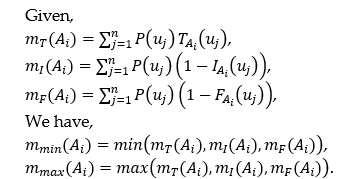Results of a physical exercise program with music therapy in Ecuadorian patients affected by type 2 Diabetes Mellitus to increase muscle strength in upper limbs from a Neutrosophic Evidence Theory perspective
Keywords:
Physical activity, type 2 diabetes mellitus, combination therapy, Neutrosophic Evidence TheoryAbstract
This research, conducted at the Technical University of Ambato in Ecuador, addresses the impact of an innovative therapeutic plan that combines upper limb muscle strength exercises with music therapy in patients with type 2 diabetes mellitus (T2DM). This multidimensional approach seeks to improve the quality of life and functionality of patients through an accessible treatment tailored to their needs. The primary purpose of the study is to implement and evaluate a therapeutic plan designed to improve upper limb muscle strength in 28 older adults diagnosed with T2DM. The program included specific exercises and music therapy, structured in 48 sessions for 24 weeks. The music selected, based on the participants' preferences, sought to enhance the physical and emotional benefits of the treatment. The methodology included initial and final tests using manual dynamometry to measure muscle strength, and the results were analyzed with non-classical statistical tools. The findings revealed significant improvements in participants' muscle strength, with an average increase of 3 to 4 kg in the capacity for key movements such as shoulder flexion, extension, abduction, and adduction, as well as elbow flexion and extension. This study not only validates the use of music therapy as a complement to physiotherapy programs but also provides a replicable model for future interventions in the management of T2DM, highlighting the importance of integrative approaches in the treatment of chronic diseases. We used a Neutrosophic Evidence Theory method to process the collected data, according to which data are divided into a truthfulness component, an indeterminacy component, and a falseness component. Patient's performance is assessed using neutrosophic measures corresponding to the generalization of the Dempster-Shafer theory to the neutrosophic framework. In this way, we incorporate indeterminacy into the calculations. In addition, the Dempster-Shafer theory allows us to work with subjective probabilities. Specifically, we use the calculation of a probability estimation method appearing in the literature.
Downloads

Downloads
Published
License
Copyright (c) 2025 Neutrosophic Sets and Systems

This work is licensed under a Creative Commons Attribution 4.0 International License.






